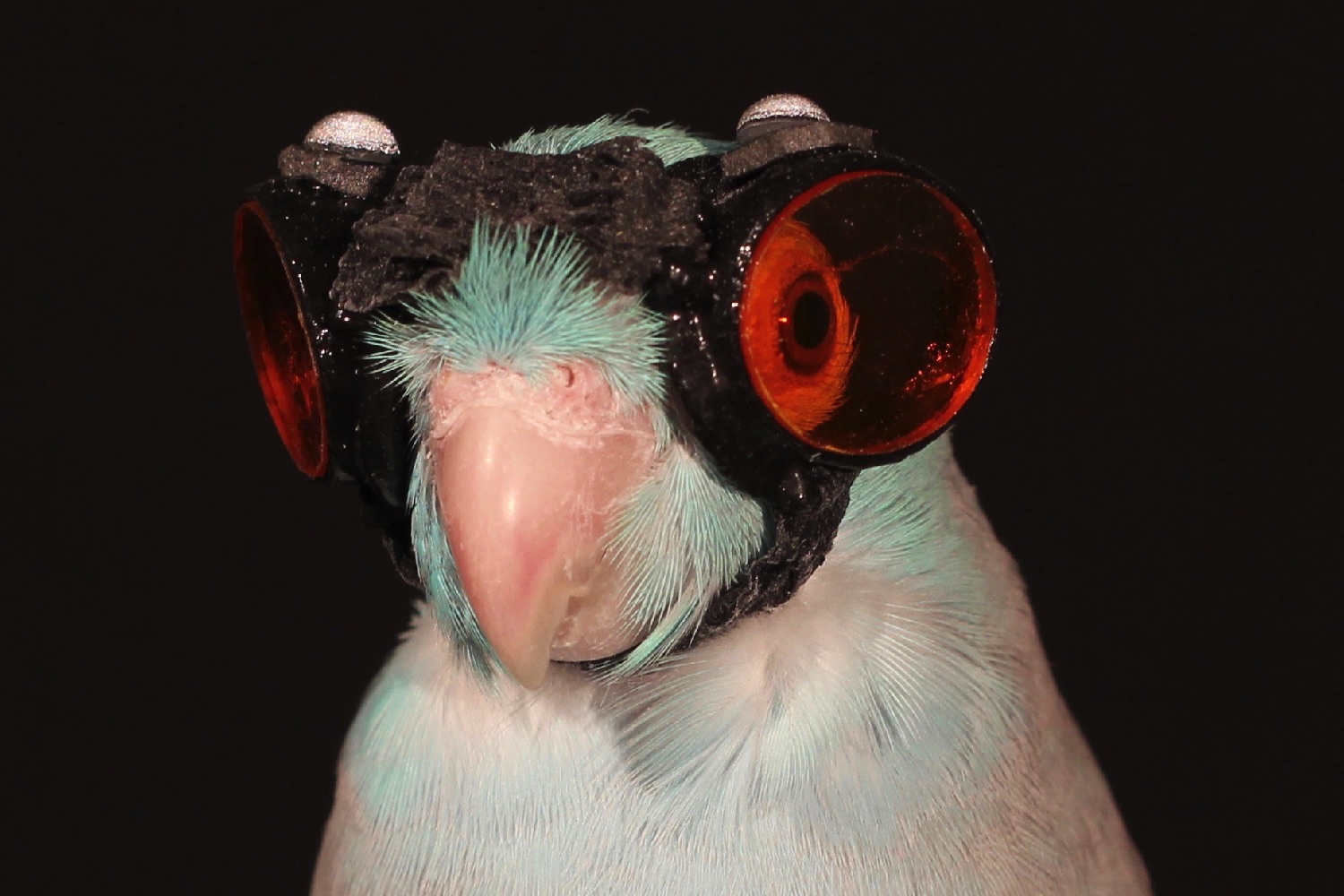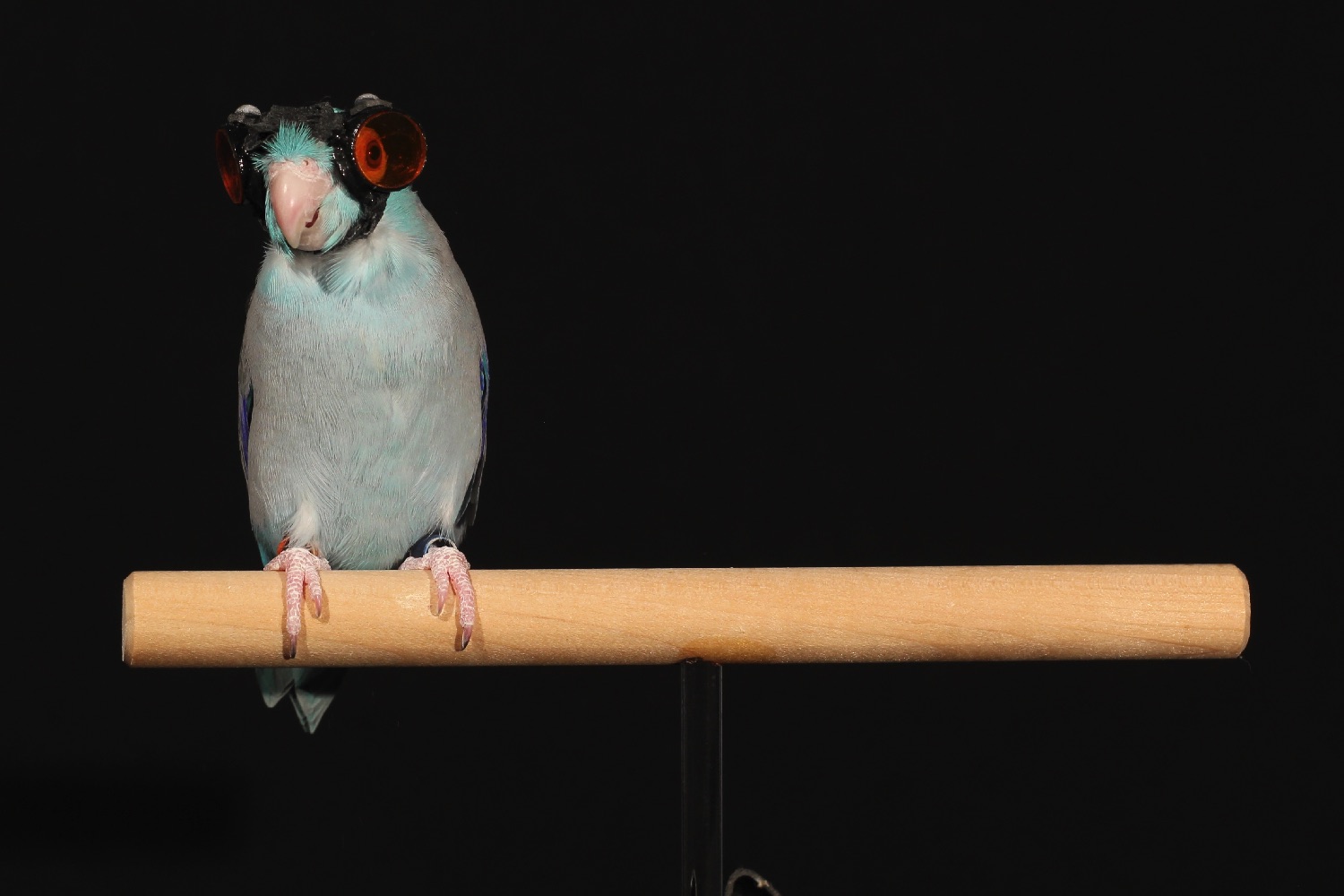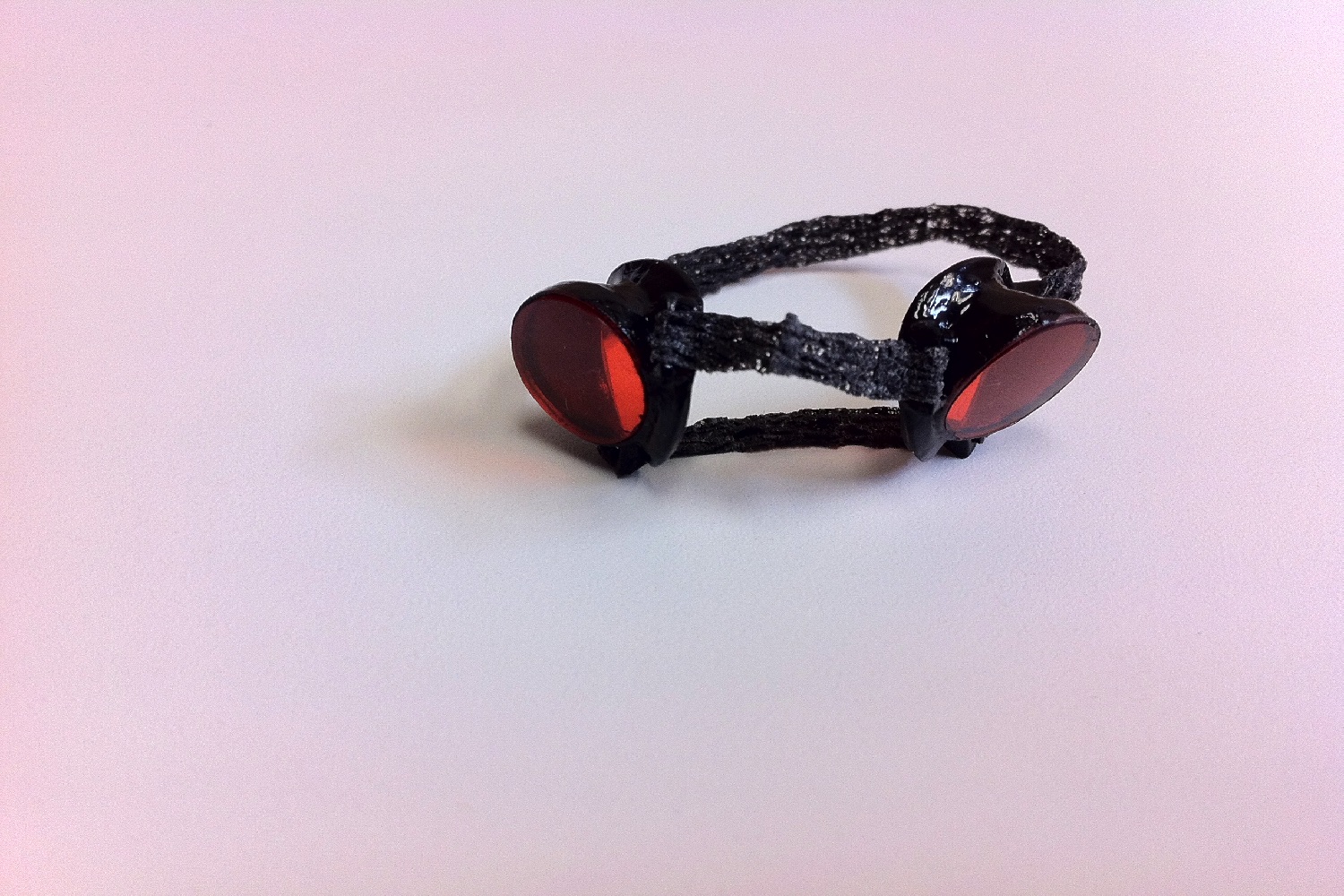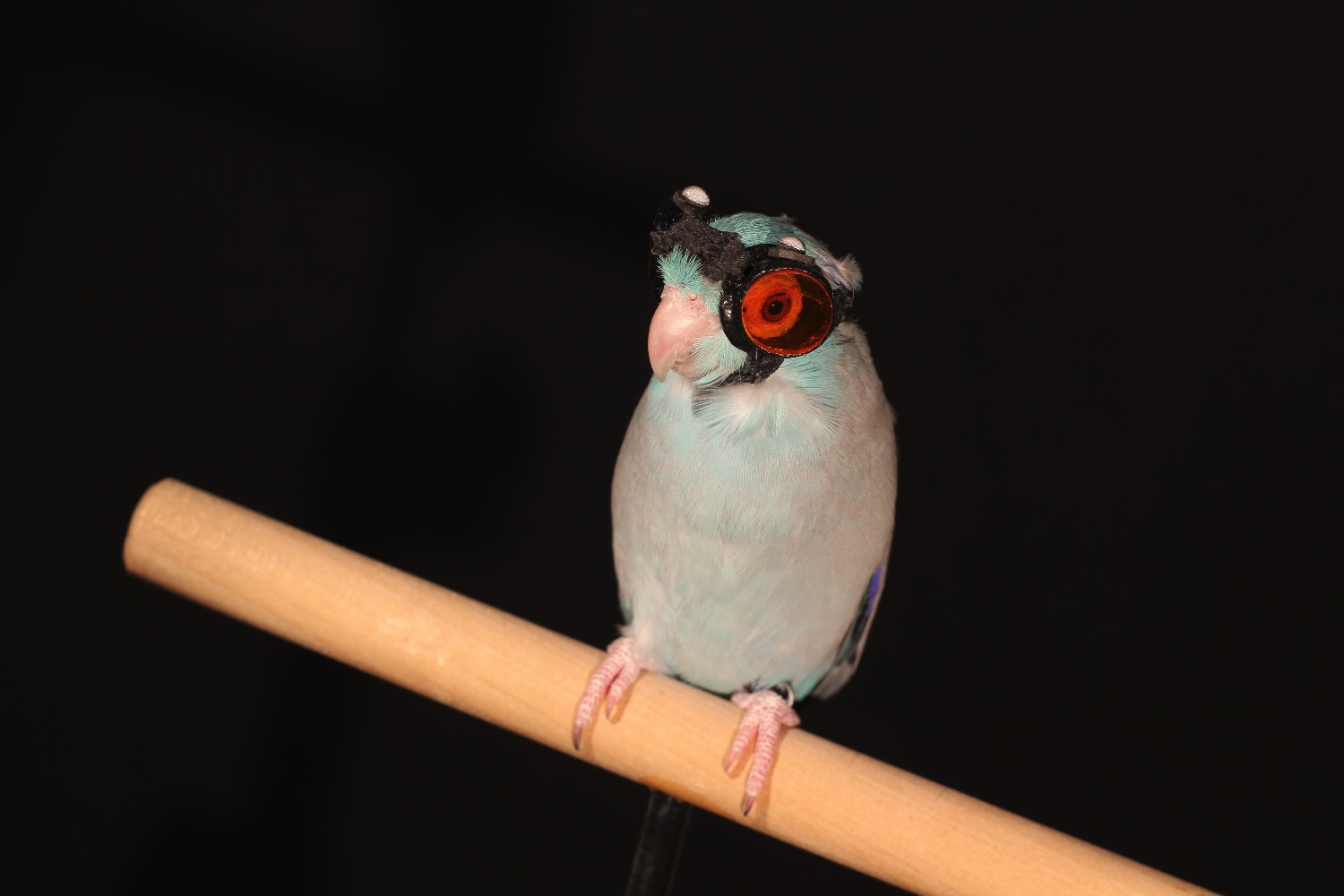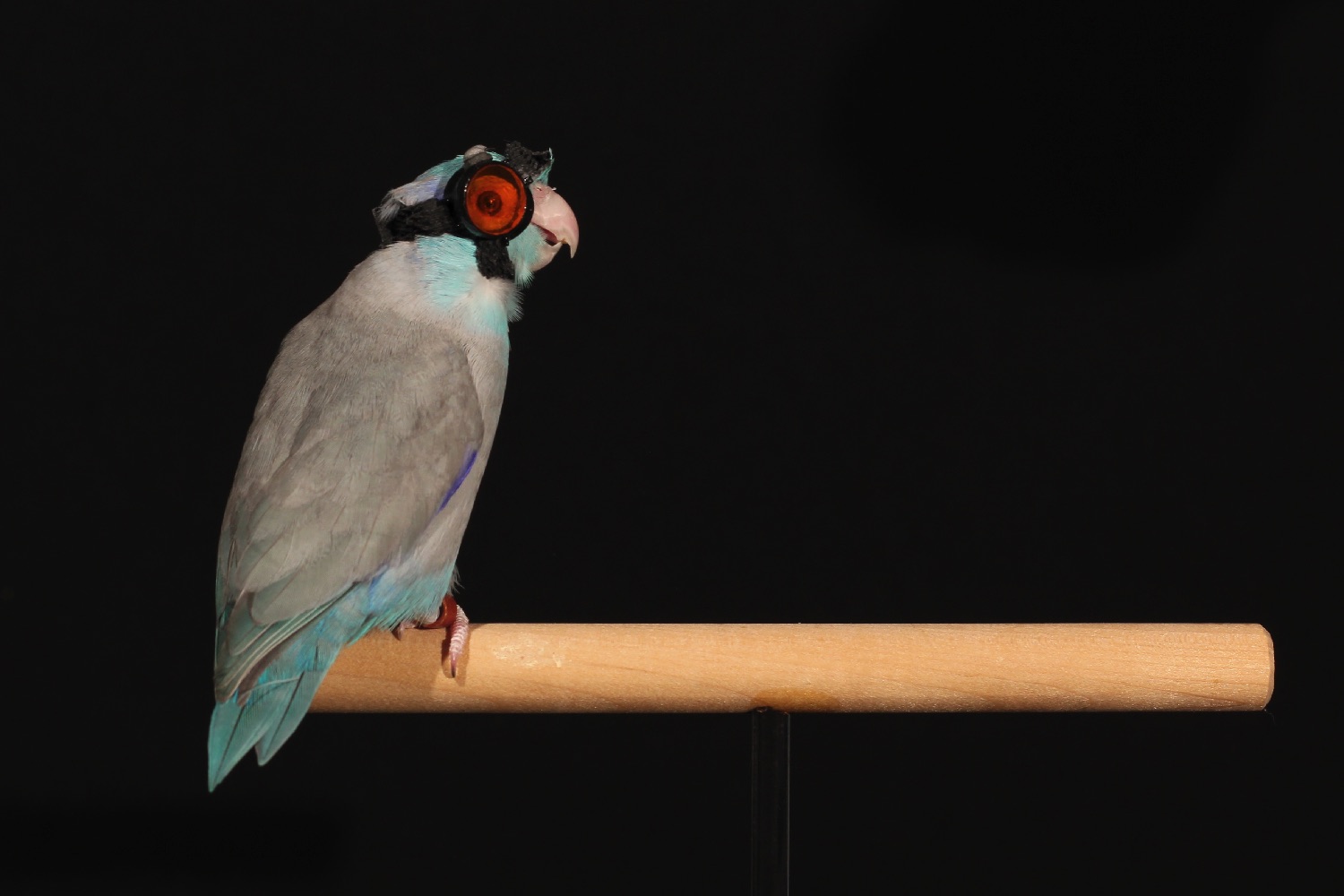In fact, Obi (who is actually a parrotlet, a miniature parrot species native to South and Central America) is part of an experiment designed to better understand how birds (minus goggles) support themselves during flight. The lessons learned could help inform a future generation of flying robots that will be more efficient than current examples.
The goggles are present to protect the bird’s vision as it flies through a laser sheet. The lasers illuminate a field of non-toxic, micron-sized aerosol particles, which are then recorded using high speed cameras to note how they move around Obi as he flies.
More: Office of Naval Research thinks cyborg locusts could help us sniff out explosives
“When I initially started working on the project, I had to come up with a viable method of obtaining flow field data very close to the bird,” graduate student Eric Gutierrez told Digital Trends. “The only way I could think of getting the appropriate data was to protect the bird’s eyes from the laser. I then created the miniature bird goggles from scratch with the help of my mentor, David Lentink. After many designs and iterations, I developed the lightweight, durable, compact goggles … [that include] 3D-printed sockets for each eye, lenses, and vetrap to strap the goggles onto the parrotlet’s head.”
In the end, the study served to demonstrate that current models for calculating the lift produced by birds are not very accurate.
“This gives important insight to researchers studying bird flight aerodynamics,” Gutierrez continued. “These equations are not as reliable as the scientific community hoped they were. New methods need to be developed that more accurately predict lift from flapping animals.”
More importantly, though, what did Obi make of his headwear? “The bird enjoys wearing the goggles very much,” Gutierrez said. “Especially when it receives the millet seeds [as a reward].”
D’aww! If only all experiments into future flying robots were so cute.
